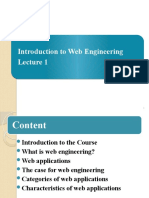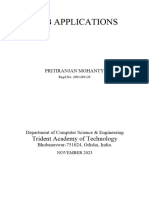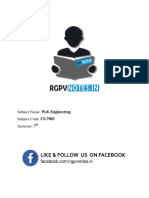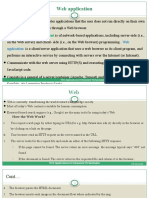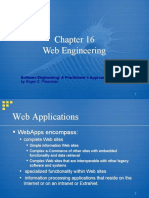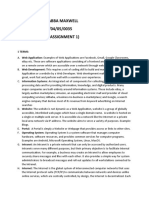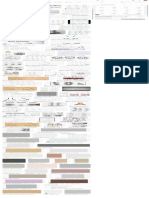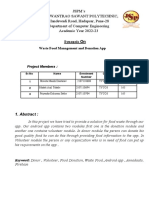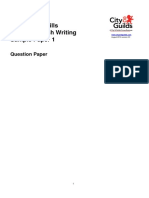0% found this document useful (0 votes)
23 views61 pagesWeb Engineering Lecture 1
The document provides an introduction to Web Engineering, highlighting its significance in developing high-quality web applications. It discusses the history of the World Wide Web, various categories of web applications, their characteristics, and the importance of web engineering methods and techniques. The document emphasizes the need for systematic approaches in web application development to address quality deficiencies and evolving requirements.
Uploaded by
anmol198395 anmol198395Copyright
© © All Rights Reserved
We take content rights seriously. If you suspect this is your content, claim it here.
Available Formats
Download as PDF, TXT or read online on Scribd
0% found this document useful (0 votes)
23 views61 pagesWeb Engineering Lecture 1
The document provides an introduction to Web Engineering, highlighting its significance in developing high-quality web applications. It discusses the history of the World Wide Web, various categories of web applications, their characteristics, and the importance of web engineering methods and techniques. The document emphasizes the need for systematic approaches in web application development to address quality deficiencies and evolving requirements.
Uploaded by
anmol198395 anmol198395Copyright
© © All Rights Reserved
We take content rights seriously. If you suspect this is your content, claim it here.
Available Formats
Download as PDF, TXT or read online on Scribd
/ 61





